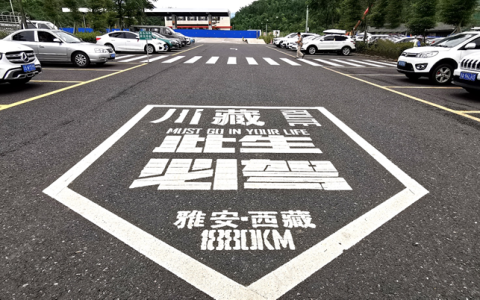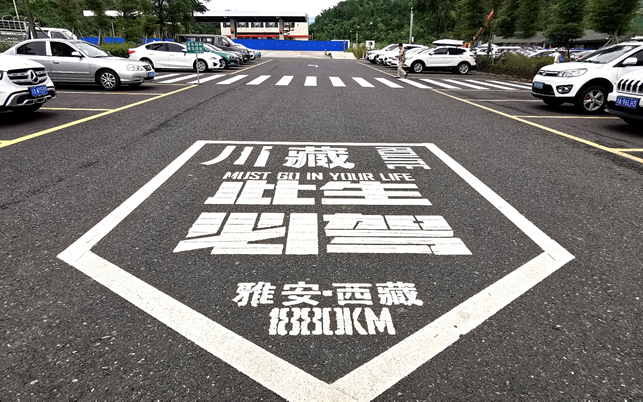
The 318 Sichuan-Tibet Line travel shooting plan was originally implemented in March this year. Due to the impact of the new crown epidemic, it was adjusted to September.National Highway 318 starts from Shanghai and ends at Tibet Friendship Bridge, with a total length of 5,476 kilometers. This section of the Sichuan-Tibet Line refers to the highway from Chengdu to Lhasa, with a total length of 2,142 kilometers, which is the Southern Sichuan-Tibet Line. We marched towards Tibet from Ya'an, Sichuan, crossed Erlang Mountain to the west, crossed the Dadu River, Yalong River, Jinsha River, Lancang River, and the upper reaches of Nu River along the way, passed through Yajiang River, Litang, and Batang and crossed the Zhubalong Jinsha River Bridge to enter Tibet. Then pass through Mangkang, Zuogong, Bangda, Basu, Ranwu, Bomi, Lulang, Nyingchi, Jiacha, Shannan, and finally arrive in Lhasa.National Highway 318 is the longest national highway in China, and the Sichuan-Tibet Line is known as the “Chinese People’s Landscape Avenue” and is its most essential part. Entering Tibet along the 318 Sichuan-Tibet Highway, passing Kangding with an altitude of 2,385 meters, you have to climb the first Zheduo Mountain with an altitude of 4,298 meters to reach Xindu Bridge, a photographer’s paradise. After resting in Xinduqiao, we have to climb the Kazila Mountain with an altitude of 4,718 meters. The heights of subsequent peaks are basically above 4,000 meters. The highest altitudes on the way are Dongda Mountain at 5,130 meters and Mira Mountain at 5,013 meters.National Highway 318 is not only difficult but also full of dangers. You overlook the mountain peaks in the distance, with countless snow peaks twinkling under the blue sky; as you approach the canyon, the mountains rise and fall, and the rivers roar; you can also encounter grasslands, lakes, glaciers, temples, horses, yaks, and friendly Tibetan compatriots. It is also an adventure road full of thorns and surprises that countless self-drivers and cyclists yearn for. It is also a shooting trip that photographers and photography enthusiasts are fascinated by. More and more people list walking the Sichuan-Tibet Line as a must-do in their lifetime, which fully illustrates the charm of 318.Some people will also ask about "altitude sickness". Personally, before entering Tibet, I also checked some information on the Internet. I also prepared "Lan Yang Tablets" and "Glucose" to combat "high altitude sickness". , to meet urgent needs. Fortunately, after passing the Xinduqiao pass, I basically adapted to the plateau environment. None of the more than 20 people in the group had serious "high altitude sickness" symptoms, which provided the necessary conditions for our shooting.Below, I will record and shoot from the unique perspective of a photography enthusiast and aerial photography learner for your reference.Travel photography starts from Ya’an, SichuanThe first shooting point we arrived at was the Luding Iron Cable Bridge in Luding County on the Dadu River. This was once a natural hazard that the Red Army captured during the Long March.I used a drone to photograph the Luding Cable Bridge.We arrived at Xinduqiao, Sichuan, on the afternoon of the second day, which is a Tibetan area in Sichuan and has beautiful scenery. The mature highland barley has turned golden yellow, and temples and Tibetan characters can be seen on the top of the mountain in the distance.Starting from Xinduqiao, we passed the second Kazila Pass with an altitude of 4718 meters, and took aerial photos of the winding winding mountain roads, snow-capped mountains, plateau forests and meadows.After passing the Haizi Mountain pass at an altitude of 4,685 meters, I took a photo of Haizi Sister Lake, a twin lake at the foot of Haizi Mountain, and also took a 360-degree panoramic view.On the fourth day, we officially entered Mangkang County in Tibet from Batang County in Sichuan. The bus slowly circled along the mountain road from the turbulent Nujiang Valley at an altitude of more than 2,600 meters to the Yela Mountain Observation Deck at an altitude of 4,658 meters. I used my small plane to record and shoot the magnificent scene of the 72 turns of the Nu River.On the way, I also photographed the "Tongmai Bridge" on the Nu River. The single-span cable-stayed Tongmai Bridge looks even more majestic against the background of the two previous cable bridges.On the sixth day of the 318 Sichuan-Tibet Line, we arrived at Basu Ranwu Lake. Ranwu Lake is an alpine lake with charming scenery. Under the blue sky and white clouds, the lake is particularly beautiful. When shooting in the morning, I also photographed the terraced fields of mountains, lakes and plateaus.The construction and development of Tibet can only be understood after arriving in Tibet. The counties we passed along the way are all under development. This is the aerial photo I took of Bomi County. The Parung Zangbo River passes through the city. The scenery on both banks is beautiful, surrounded by mountains, and the Tibetan folk customs are simple.On the eighth day of the travel photography trip, we passed by a modern town - Lulang Town. Tibetan-style buildings are dotted in the river valley plains, and next to it is the famous Lulang Forest Sea.In the Grand Canyon of the Brahmaputra River, there is a confluence of rivers. This is the intersection of the Brahmaputra River and the Niyang River. The river water and the river water present two different colors, which are more obvious from a high altitude.Our itinerary has entered the fascinating "Yamdrok Yongcuo", one of the three holy lakes in Tibet. Looking up at the holy lake from the viewing platform, it is a blue sky and white clouds plus a deep blue lake in the middle of the mountains, like A sapphire is embedded in the mountains. Under different light, the lake surface shows different colors.After more than ten days of bumpy journey, I finally arrived in Lhasa, which I have longed for. It was already past 10pm when I arrived in Lhasa. The night view of Lhasa was also very brilliant. The bus passed by the Lhasa Bridge on the Lhasa River, and a beautiful scenery was presented to me. In front of my eyes, the Potala Palace in the distance also looked extremely spectacular under the light.After resting, I got up early and took advantage of the morning light to take pictures of the magnificent scene of the Potala Palace and the square of the Potala Palace in the morning light.Photographers took photos in front of Yamdrok Yongcuo.

















































